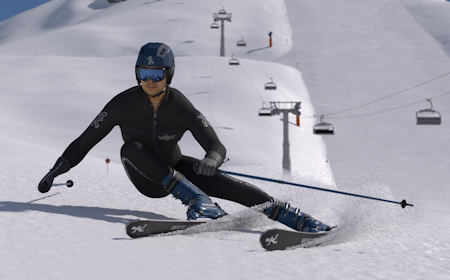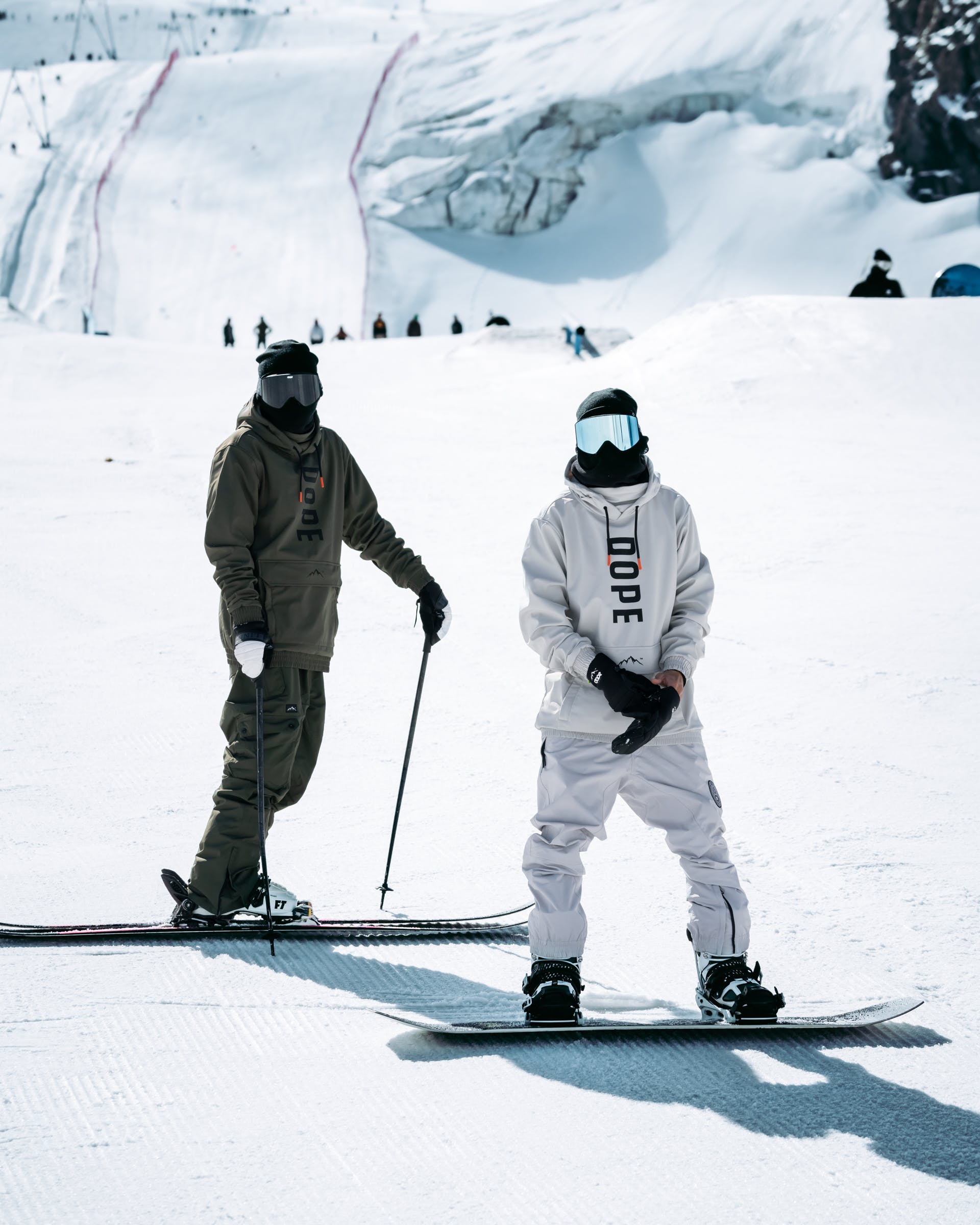
All ages and abilities can enjoy snowshoeing, which is an aerobic activity with low impact. This is the perfect winter sport for solo hikers and families who want to explore new places, get in shape, and enjoy the solitude of a snow-covered trail.
Ski Boots and Snowshoes
The first step to getting started snowshoeing, is choosing the right shoes. Winter boots should be waterproof, durable, and comfortable. You might also consider purchasing adjustable poles, which can be used to navigate the trails depending on your level of fitness.
There are many types of snowshoes, from light and simple to high-performance and heavy-duty. To help you decide which snowshoe model is right for you, visit your local outdoor store.

Selecting a Snowshoe for Your Gait
The most important aspect of choosing a snowshoe is its shape. The shoe should be shaped for your foot's natural gait (walking movement) and should be easy to maneuver. The shoe must be able support your weight. It shouldn't be too long or too narrow.
Your height and leg length are also important. To accommodate narrow feet or if you're shorter then the average person, you might need a longer shoeshoe.
Many snowshoes have binding straps that you place over your foot. The binding straps can be attached to your snowshoe front via a small loop. This secures your foot in its place. Although they can be tricky to fit around your ankle, they should be very comfortable.
There are three main types or binding straps you can use to attach your foot on the snowshoe. Some models include a cup to place your toe in the snow. Others have two separate straps that attach to the shoe frame and are placed over the top.

While they can be tedious to put together, bindings are crucial for the safe and efficient transportation your feet. They are an essential item for backcountry travel as they keep your foot on your frame and prevent your snowshoe from tipping over while you move up and downhill.
Choose the 'Flex' of Your Ski Boots
You might consider a ski boot that has a higher flex if you are planning on an adventure trip covering a variety terrain. This gives you more power transfer and control in difficult terrain.
A soft flex is best for recreational and beginner snowshoeing, while a medium flex is better for intermediate snowshoers, and a stiff flex is ideal for those who are more experienced and tackling more challenging terrain.
FAQ
Where is the cheapest place to buy airline tickets?
You can find the best deals on airfare by looking at airlines like Jetstar or Virgin Australia, Tigerair, Malaysia Airlines and Singapore Airlines.
Search online and you'll see that many of these airlines offer cheap flights as a promotional offer.
What documents should I keep handy when traveling?
You can always access important documents while you are on the road by keeping copies at home. Also, keep copies of your passport, driver’s licence, and other identification cards, along with any credit card information, in case you need them, to make it easy to access when you travel.
It's always a good idea to carry a photocopy of your passport with you so it can be used as proof of identity if needed.
Don't forget to attach copies of your itinerary or reservations. These will help you to remember where you are and what you want to see.
This should be in addition to the original flight ticket and hotel reservation details. You can contact your family back home easily if you are in trouble.
You should never leave valuables behind. It's a good idea to keep valuables safe and secure by storing them inside your luggage or on a money belt.
Check your bag before you go to prevent losing expensive items.
Remember, it's safer to keep things simple rather than trying to plan everything.
Relax and enjoy your trip!
How much luggage do I need?
The length of your trip will determine how much luggage you need. If you are flying, your hand luggage is limited to less than 20kg. If you're traveling by bus or train, you'll need more space.
When you arrive at the airport, you will be given a form to fill out with details of your flight. This form will contain information about your flight, such as the weight and assistance required when you check them in.
You should always check this before leaving home. If you don’t, you may end up sitting around waiting while everyone else goes through their bags.
Because you never know what could happen, it is better to travel light. For example, if your bag gets lost, you won't have anything to wear.
What snacks can I take on a plane?
You have many options for snacks to take with you when flying. You might consider bringing along any food items you enjoy while traveling.
For example, if you love chocolate, you might want to pack some chocolates and other treats such as biscuits, crisps, and nuts.
You might consider packing cheese or crackers if you are looking for something savory.
Also, think about what type of drinks you'd like on board. You might prefer something hot or cold.
Whatever kind of snack or drink that you choose to bring along with you, make sure everything is packed securely.
You won't have to worry about your items getting damaged while traveling.
Statistics
- Between the ages of 11 and 13, kids, or tweens, will likely want some autonomy but also need boundaries. (travelandleisure.com)
- They're also likely to offer babysitting services, in case you'd like to have dinner one night after 7 p.m. (travelandleisure.com)
- According to Maori legends, this park holds 14 fjords that were all carved by a giant stonemason with an adze. (busytourist.com)
- Alcoholic beverages with 24% alcohol or less are not subject to limitations in checked bags. (tsa.gov)
- No Checked Bags: No Alcoholic beverages with more than 70% alcohol (over 140 proof), including grain alcohol and 151 proof rum. (tsa.gov)
External Links
How To
How to plan your next vacation
Planning a trip requires many things, such as booking flights and hotels, car rentals, activities, and so on. This includes important considerations like budget, destination and weather forecast.
These are the things you should keep in mind as you plan your next vacation.
We have put together a step-by–step guide to help plan your next vacation. Based on customer feedback and our own experience, this guide was created. We hope that you will find the following guide useful in planning your next vacation.
Steps:
-
Your Budget Plan - It is important to plan your budget before you start planning your trip. Before you can start planning where and what you will do, you must first know how much you are willing to spend. If you don't have the money, your plans may be cancelled.
-
Book Your Flights. After you have decided on your budget, book your tickets. You should ensure that you get the best deal possible at the lowest price. In addition, make sure you check whether there are any special offers for certain seasons. These deals could help you save a lot of cash.
-
Your Destination - Now that you've booked your plane ticket, it's time to choose where you want. Multiple factors will play a role in choosing the destination you choose, such as location (wherever you are), climate (what season), culture (how friendly and affordable it is), cost (how affordable it can be) and cost.
-
Find Accommodations - After choosing your destination, the next step would be finding accommodations. There are many choices for accommodation. You can choose from affordable hostels or luxury suites. Your needs and preferences will determine the type of accommodation that you choose. A hotel is not the best choice if you want to be close to the city centre. On the other hand, if you prefer quiet places away from crowds, a homestay may suit your requirements better.
-
Select Activities & Attractions: Now that you have selected your accommodation, it is time to decide which activities and attractions to include in the itinerary. Depending on the length of your stay, you can either choose only a few activities or add several new ones throughout your trip.
-
Plan Your Trip - Once you have decided on the attractions and activities you want to include, you can now plan your itinerary. To achieve maximum value from your trip, you should stick to a fixed schedule. If you have the freedom to roam as you please, your trip will be even more enjoyable.
-
Create Itinerary - Creating an itinerary includes all the information about your trip. It is important to write down everything you need, from accommodation to meals, to activities to restaurants, and to create a list.
-
Research Online - Before leaving for your trip, research online so you won't miss anything. Review and read testimonials to learn what travelers have to say about a destination. This will help you plan.
-
Don't Overpack - This is one of the most common mistakes people make when packing. Do not bring more than three sets of clothes. Make sure you bring clothes that are appropriate for the area.
-
Be prepared. Get everything organized before you head out on your trip. You don't want your trip to be ruined by searching for vital documents while you're in transit.